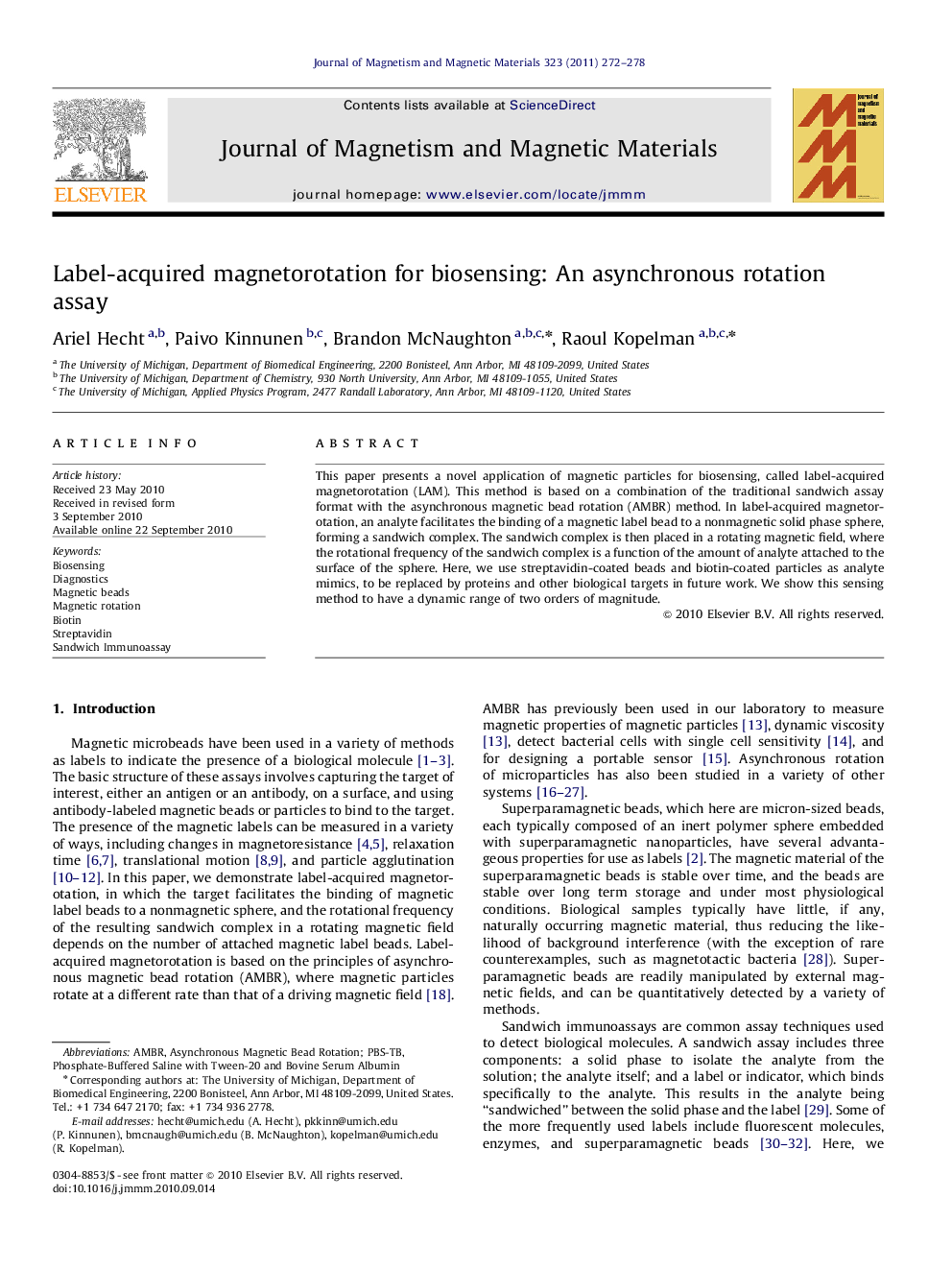| Article ID | Journal | Published Year | Pages | File Type |
|---|---|---|---|---|
| 1801172 | Journal of Magnetism and Magnetic Materials | 2011 | 7 Pages |
This paper presents a novel application of magnetic particles for biosensing, called label-acquired magnetorotation (LAM). This method is based on a combination of the traditional sandwich assay format with the asynchronous magnetic bead rotation (AMBR) method. In label-acquired magnetorotation, an analyte facilitates the binding of a magnetic label bead to a nonmagnetic solid phase sphere, forming a sandwich complex. The sandwich complex is then placed in a rotating magnetic field, where the rotational frequency of the sandwich complex is a function of the amount of analyte attached to the surface of the sphere. Here, we use streptavidin-coated beads and biotin-coated particles as analyte mimics, to be replaced by proteins and other biological targets in future work. We show this sensing method to have a dynamic range of two orders of magnitude.
